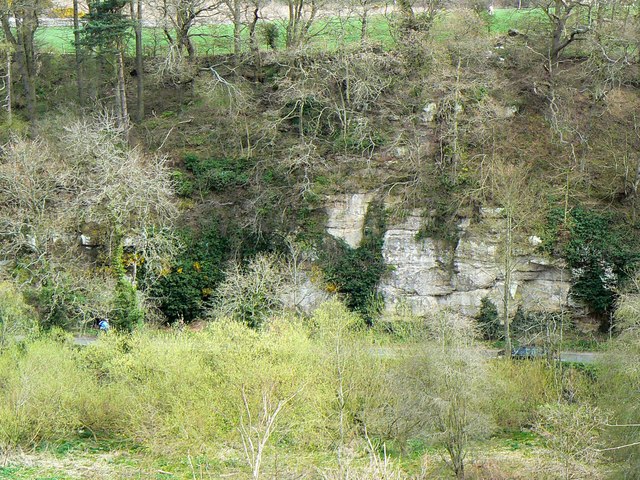Dura Den on:
[Wikipedia]
[Google]
[Amazon]
 Dura Den is a small, 3 km-long wooded
Dura Den is a small, 3 km-long wooded
The Fossil Fishes of Dura Den
Geography of Fife Landforms of Fife Canyons and gorges of Scotland Forests and woodlands of Scotland {{Fife-geo-stub
 Dura Den is a small, 3 km-long wooded
Dura Den is a small, 3 km-long wooded gorge
A canyon (from ; archaic British English spelling: ''cañon''), or gorge, is a deep cleft between escarpments or cliffs resulting from weathering and the erosion, erosive activity of a river over geologic time scales. Rivers have a natural tenden ...
that is located near Cupar
Cupar ( ; gd, Cùbar) is a town, former royal burgh and parish in Fife, Scotland. It lies between Dundee and Glenrothes. According to a 2011 population estimate, Cupar had a population around 9,000, making it the ninth-largest settlement in Fif ...
in northeastern Fife
Fife (, ; gd, Fìobha, ; sco, Fife) is a council area, historic county, registration county and lieutenancy area of Scotland. It is situated between the Firth of Tay and the Firth of Forth, with inland boundaries with Perth and Kinross (i ...
, Scotland. This narrow cleft follows a course between the villages of Kemback
Kemback is a village and parish in Fife, Scotland, located east of Cupar. The present village was developed in the 19th century to house those working the flax mills on the nearby Ceres Burn. From 1681 the minister for the parish was Alexander Ed ...
to the north and Pitscottie to the south. A small stream, named the Ceres (or Kame) Burn, follows the course of this gorge and this flow includes small waterfalls near the midpoint. Historically the Ceres Burn was used to power jute
Jute is a long, soft, shiny bast fiber that can be spun into coarse, strong threads. It is produced from flowering plants in the genus ''Corchorus'', which is in the mallow family Malvaceae. The primary source of the fiber is ''Corchorus olit ...
spinning mills
Around 1859, the geologist and Newburgh minister John Anderson discovered what turned out to be extensive sandstone
Sandstone is a clastic sedimentary rock composed mainly of sand-sized (0.0625 to 2 mm) silicate grains. Sandstones comprise about 20–25% of all sedimentary rocks.
Most sandstone is composed of quartz or feldspar (both silicates) ...
deposits of ganoid fossil
A fossil (from Classical Latin , ) is any preserved remains, impression, or trace of any once-living thing from a past geological age. Examples include bones, shells, exoskeletons, stone imprints of animals or microbes, objects preserved ...
ized fish
Fish are aquatic, craniate, gill-bearing animals that lack limbs with digits. Included in this definition are the living hagfish, lampreys, and cartilaginous and bony fish as well as various extinct related groups. Approximately 95% of li ...
in this area.
The Dura Den Wood occupies an area of . The woods include ash
Ash or ashes are the solid remnants of fires. Specifically, ''ash'' refers to all non-aqueous, non- gaseous residues that remain after something burns. In analytical chemistry, to analyse the mineral and metal content of chemical samples, ash ...
, oak
An oak is a tree or shrub in the genus ''Quercus'' (; Latin "oak tree") of the beech family, Fagaceae. There are approximately 500 extant species of oaks. The common name "oak" also appears in the names of species in related genera, notably ''L ...
, and hazel
The hazel (''Corylus'') is a genus of deciduous trees and large shrubs native to the temperate Northern Hemisphere. The genus is usually placed in the birch family Betulaceae,Germplasmgobills Information Network''Corylus''Rushforth, K. (1999). ...
.
External links
The Fossil Fishes of Dura Den
Geography of Fife Landforms of Fife Canyons and gorges of Scotland Forests and woodlands of Scotland {{Fife-geo-stub